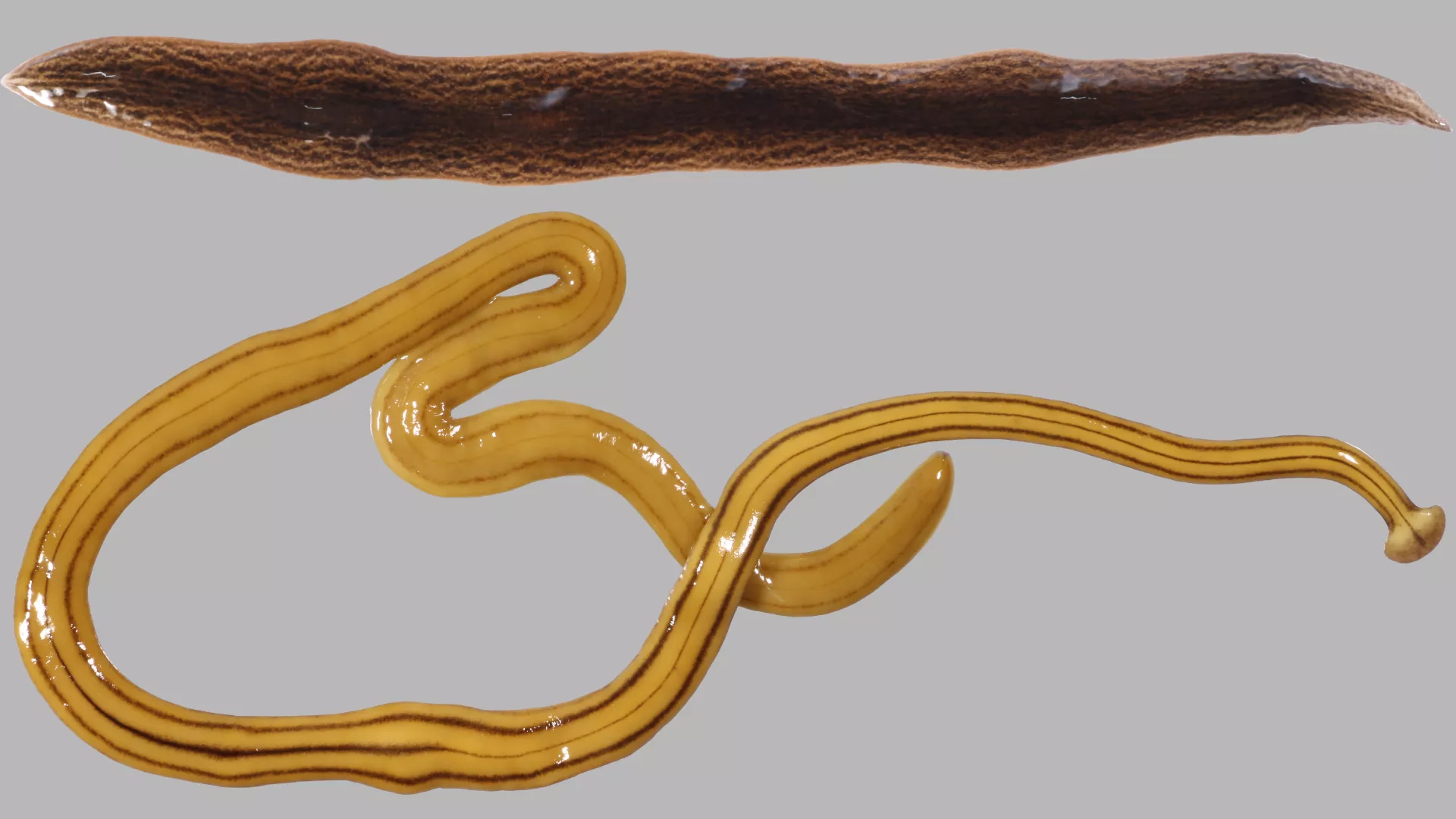Researchers at the Plant Protection Institute of the HUN-REN Centre for Agricultural Research (HUN-REN CAR) and the Hungarian Natural History Museum (HNHM) reported two land planarian species from Hungary for the first time. Due to the increased international transportation and passenger traffic, non-indigenous species appear in Hungary more frequently than before. Moreover, because of the global climate change they are more likely to settle than decades before. The two land planarian species were found in a plant nursery in Pécs, Southwestern Hungary, and their occurrence has recently been published in the zoological journal Zootaxa. Both species are carnivorous, primarily feeding on snails and earthworms, and their impact on the native fauna is not yet known, but it should be investigated.
Until this report, there have been no records of terrestrial planarians in Hungary, although 17 species of freshwater species of planarians were already known. The latter are classified in two different groups, namely the Geoplanoidea (e.g., Schmidtea and Dugesia species) and the Planarioidea (e.g., Dendrocoelum lacteum, the milk-white planarian) superfamilies. The two land planarians reported now, belong to the former superfamily (Geoplanoidea), which means that the land planarians have distant relatives in the native Hungarian fauna, although their habitat is entirely different from the native ones.
The first species is Diversibipalium multilineatum (Makino & Shirasawa, 1983), with the longest specimen found measuring 27 cm. Its characteristic features include a yellowish to ochre basic colour, three longitudinal brownish stripes, and two lobes on both sides of the anterior end, resulting in a hammer-shaped head. Due to this distinctive trait, this species is often referred to as 'hammerhead worms'. Diversibipalium multilineatum was originally described in Japan, although we cannot exclude the possibility that it was introduced there from another country. In Pécs, most specimens were found inside greenhouses, although a few were collected outside. Literature data suggest that the low humidity levels, such as those in Hungary, limit the distribution of this species. Therefore, researchers do not predict the spread of the hammerhead worm in Hungary. Molecular barcode sequences of the specimens collected in Pécs agree with those collected in France and Italy.
The other species is Obama nungara Carbayo, Álvarez-Presas, Jones & Riutort, 2016, originally described in Brazil. It is much shorter than the previous species, measuring at most 7 cm in length. It has a width of approximately 5 mm and is predominantly brownish, featuring a characteristic mottled pattern. This species belongs to the genus Obama, which has nothing to do with the former president of the United States. The name is derived from a composition of the Tupi (people native to Brazil) words 'oba' (leaf) and 'ma' (animal), referring to the body shape of species in this genus, resembling a willow tree leaf. Molecular barcode sequences of the Hungarian specimens agree with those collected in Argentina, which is part of the species' native distribution.
Its first European occurrence dates back to 2008 in Guernsey, Channel Islands, and later it was reported in numerous European countries, and in France, for example, it is widespread and common. After the researchers first collected this species in Pécs, they found it in a plant nursery in Budapest and in a botanical garden in Szombathely, indicating that Obama nungara may already have become widespread in Hungary.
Both species are carnivorous, primarily feeding on snails and earthworms, and their impact on the native fauna is not yet known, but it should be investigated.

Two land planarian species newly reported from Hungary. Upper species: Obama nungara Carbayo, Álvarez-Presas, Jones & Riutort, 2016 (body length ca. 6 cm); Lower species: Diversibipalium multilineatum (Makino & Shirasawa, 1983). Photos: Ágnes Turóci